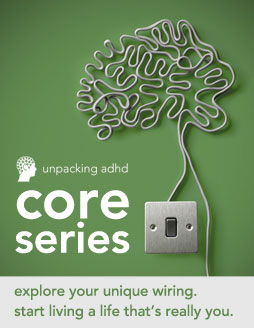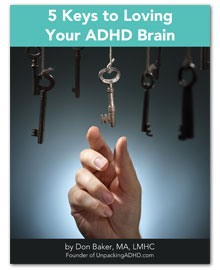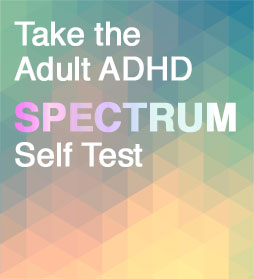We’re all pretty familiar with the concept of user manuals. You buy a new cool gadget, have zero clue how to use it, so you pull out the most boring read of your life.
AKA… the beloved user manual.
Some of you daredevils love to bypass that user manual. You want to test your abilities and give yourself a challenge. Or maybe it’s just that you hate reading… Which is fine, because sometimes your projects turn out great!
That new shelf hasn’t fallen apart… yet.
But there are other times when things are a bit too complex to figure out on your own. It’s fun to be challenged, but when there’s a way to get things done faster and not to mention easier, it can be best to go for the manual. Yes… it may be one of the most boring reads, but it is also one of the most helpful ones.
You may be thinking, what do user manuals have to do with ADHD?
Well, I’m happy you asked.
A User Manual For ADHD Minds
We’re all born into social constructs that help us learn what behaviors are acceptable and what aren’t. Most of what we hear growing up is captured in a simple word that shapes us so much…
No.
No, you can’t run around the classroom. No, you can’t doodle on your paper while I’m talking. No, you shouldn’t let your room look like a tornado went through it.
In fact, in The Slight Edge, it points to research that has concluded children are told “no” about 40,000 times by the time they’re five years old, and only told yes about 5,000 times.
Granted the “nos” aren’t all bad as they really do help us learn the appropriate ways to live. In fact, they help us create our user manual for life. The one that looks pretty much the same for everyone.
But there’s a huge problem with this almost universal user manual…
It doesn’t capture the uniqueness of you. It doesn’t grasp the neurodivergent ADHD mind.
For the majority of your life, you’ve been trying to fit yourself into the standards of the wrong user manual. It’s like buying a brand new camera but getting a user manual for a microwave. It doesn’t work. One isn’t better than the other, it’s just not what you need.
A typical user manual isn’t able to capture the neurodiversity of an ADHD mind.
Some of you may find it difficult to explain the way you function, or you may not even understand how you function yourself so there’s no way you can explain it to someone else.
It’s essential for you to create your own user manual. One that is tailored to your unique needs and functions. Your unique user manual is a great way to not only understand yourself better but to help others understand you as well.
Whether you decide to keep it to yourself or share it with others, I’m going to give you a few tips on how to get started.
Creating Your Own User Manual
Before you start to create your own user manual, you need to accept and embrace the fact that you function differently. Understand that your ADHD user manual should embrace neurodiversity and then start to learn more about yourself to create your own.
The following are some questions to uncover aspects of yourself that you may not be aware of. Take some time to write down your answers to these questions so you can keep your thoughts organized and dive deep into understanding you.
- What are your values?
This can be what you value in your work or in life. Try to really grasp what you value at work. Is it when people do things before they’re told, is it when you can work collaboratively with others on a project, or do you value having daily goals to reach? What about in life? Is it quality time with others, spending time in nature, or continually allowing yourself to explore? What makes you really feel fulfilled on a day to day basis? - What are some of your strengths and weaknesses?
I’m sure you’ve been asked this in every interview ever and maybe you just throw out an answer that makes you sound good. But now it’s time to really think about what areas of your life you succeed in and what areas aren’t your strong suit. Maybe sitting and working on a project for hours on end just doesn’t do it for you, the distractions are too much. Something that should take two hours ends up taking five! And that’s okay, be honest and jot it down. Maybe you’re really great at brainstorming ideas with others, or you absolutely love going out on the field for work. Be proud of your strengths and embrace those. - What do you feel like people misunderstand about you?
It can be that maybe you fidget while people are talking. It doesn’t mean that you’re bored, but they always seem to think so. Or that you forget people’s names a lot and people seem to think you’re rude or careless when in reality your ADHD makes it more difficult to remember things. Whatever it is, write it down. Try to get specific with this one because it can really help you explain yourself to others later on. - What’s the best way to communicate with you?
Maybe you’re used to a coach yelling at you from your sports days so you can handle when things get intense, and you don’t mind firm feedback.Or maybe you need positive encouragement and reassurance on trying a task in a different way. Be honest with yourself and really think about what helps you succeed, grow, and learn.
These are some great ones to get started, but I’m going to list off a few more thought-provoking questions to ask yourself. These will help you determine what extra information to include in your user manual:
- What are my quirks?
- What’s my style?
- Am I impulsive?
- I handle conflict between myself and others by…
- My executive skills are…
- I lose patience when…
- What are my expectations of myself and others?
- What are my “intensities”?
- What’s the best way for someone to help me?
- When do I feel fulfilled?
I’m sure some of these questions are ones that you’ve never thought of before.
Maybe you’ve been coasting along without any major issues but you’re wanting to learn more about yourself. Or you feel like it’s time to buckle down and embrace yourself rather than feel shame about the hardships that can come from ADHD.
It’s okay if you’re struggling to answer these questions. For some of you, it’s the first time you’ve ever had to see yourself apart from others’ expectations. Rather than focusing on other people’s standards, it’s time to gather data about… you! Observe yourself in situations and learn how your reactions affect others.
All of the personal data that you collect will be put into your own user manual. Because, ultimately, the goal of creating your own is to capture the uniqueness of you.
For most of your life, you’ve been put into a mold that didn’t fit your neurodivergent mind. It tried to constrain you rather than to embrace your unique strengths.
Your own user manual can embrace the strengths of your ADHD mind while helping others understand the best way to work with you. It can help them learn how to approach you, see what your strengths and weaknesses are, and prevent them from misunderstanding your reactions.
I hope that creating a user manual will help you learn more about how you function and also help you embrace your uniqueness. If you’re wanting to learn more about how to optimize your own amazing brain, check out our online courses to get started.






